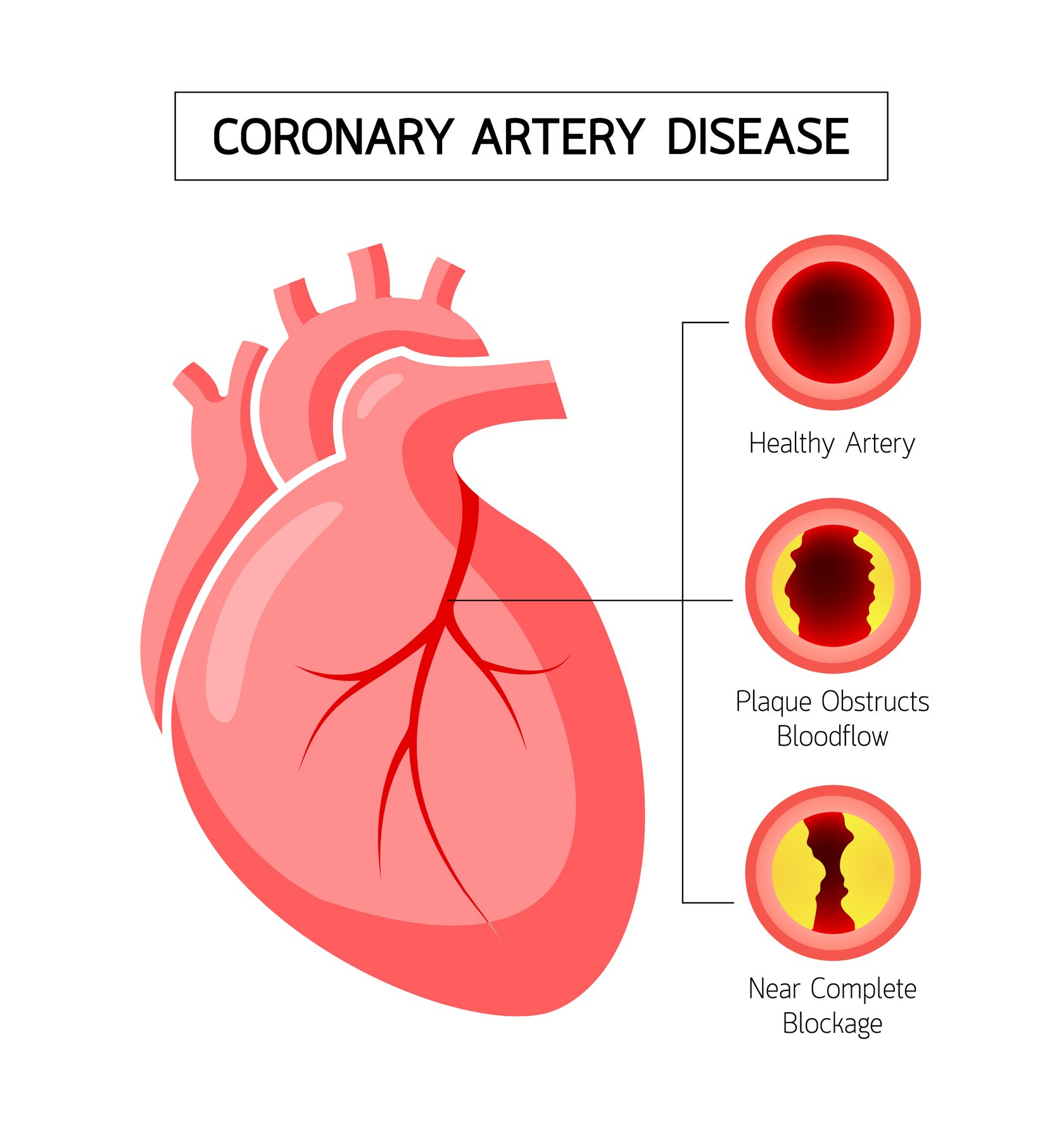
Coronary Artery Syndrome
Coronary artery syndrome (CAS) is caused by plaque build-up in the walls of the coronary arteries which may partially or completely block blood flow. The first sign of coronary artery syndrome/disease is often a myocardial infarction (Centers for Disease Control & Prevention (CDC), 2018).
Coronary Artery Syndrome is a Form of Cardiovascular Disease. Did you know:
- Cardiovascular disease is the leading global cause of death, accounting for more than 17.6 million deaths per year in 2016, a number that is expected to grow to more than 23.6 million by 2030, according to a 2014 study
- Approximately every 40 seconds, an American will have a heart attack
- The estimated direct and indirect cost of heart disease is $218.7 billion
These statistics and many others stress the importance of preventing coronary artery syndrome.
The underlying pathophysiology in CAS is decreased blood flow to part of the heart musculature which is usually secondary to plaque rupture and formation of thrombus. Sometimes CAS can be secondary to vasospasm with or without underlying atherosclerosis. These spasms may occur from the use of cocaine or methamphetamines; or from increased cardiac workload secondary to thyrotoxicosis, anemia, hypoxemia, or fever. The result is decreased blood flow to a part of the heart's musculature resulting first in ischemia and then infarction of that part of the heart (Singh, Museedi, & Grossman, 2019).
In order to prevent as many cases of CAS as we can, one must understand the risk factors. There are two types of risk factors:
- Modifiable: those things we have control over such as obesity, smoking, sedentary lifestyle
- Non-modifiable: Gender, family history, and age
(Boudi, 2016b)
The American College of Cardiology/American Heart Association Task Force on Clinical Practice Guidelines were updated in 2019. These guidelines give the healthcare provider standardized, evidence-based best practices to follow when treating CAS (Arnett, Blumenthal, Albert, Buroker, Goldberger….& Ziaeian, 2019).
We may not be able to eliminate CAS, due to the non-modifiable risk factors, but we can as healthcare workers, educate the public regarding lifestyle changes that could significantly reduce the risk of CAS.
To learn more about the Clinical Practice Guidelines and the prevention of CAS, review the RN.com course: Diagnosis and Management of Acute Coronary Syndrome.
References
Arnett, D.K., Blumenthal, R.S., Albert, M.A., Buroker, A.B., Goldberger, Z.D….& Ziaeian, B. (2019). 2019 ACC/AHA Guideline on the Primary Prevention of Cardiovascular Disease: A Report of the American College of Cardiology/American Heart Association Task Force on Clinical Practice Guidelines.
Boudi, F. B. (2016b). Risk factors for coronary artery disease.
Centers for Disease Control and Prevention (CDC). (2018). Coronary artery disease.




